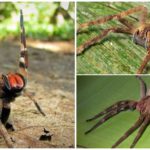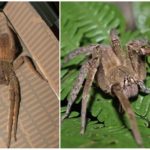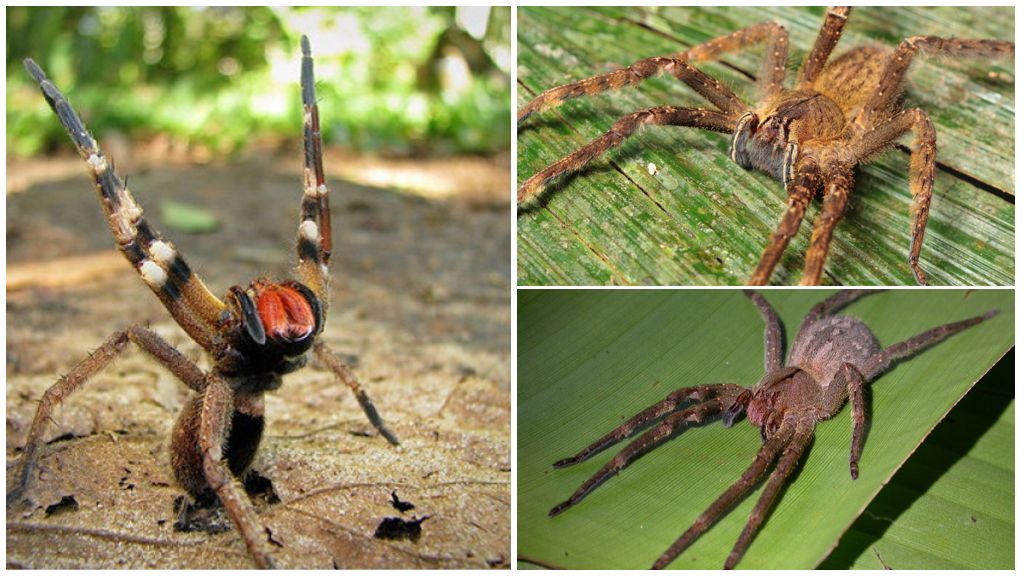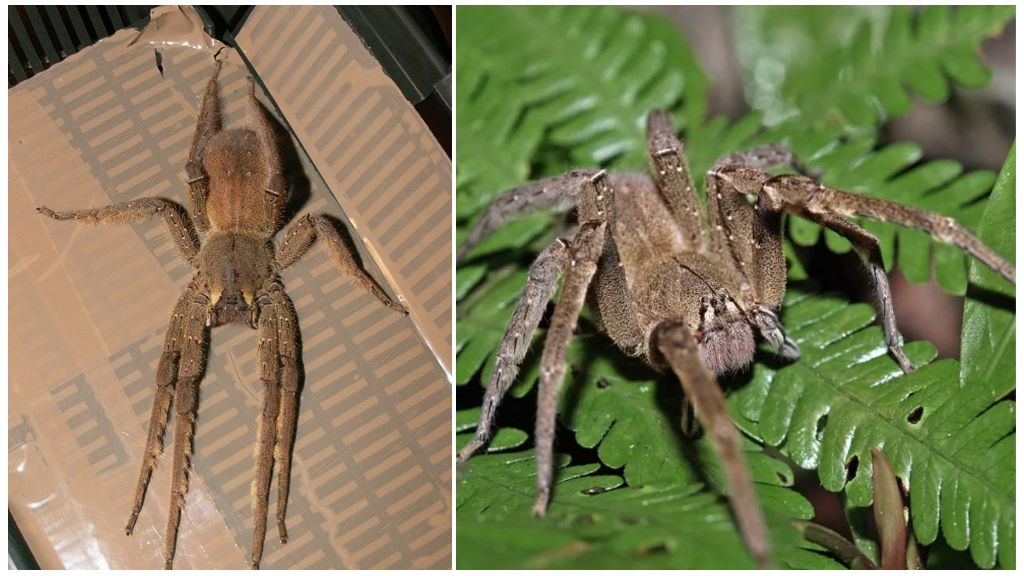Description and photo spider tramps
Content
- Spider tramp
- Spider tramp
The spider tramp Phoneutria belongs to the Ctenidae family of runners. The poisonous arachnid was described relatively recently in 2012, found in Brazil. Natural habitat tropical countries of South, Central America. The family includes only 8 species. In 2010, the spider tramp hit the Guinness Book as the most poisonous arachnid in the world.
Appearance Description
Stray spider is a large arthropod. The size together with paws reaches 10 cm.The structure is typical for all spiders - a convex round abdomen, cephalothorax. The body is covered with durable shell, long fibers. Limbs long, powerful. Allow the hobo spider to not only develop great speed, but also to jump well.
Color differs depending on the species. The black spider tramp is the largest species. In 2001, a rare species of poisonous wandering arthropod with red color was described. The lower part of the abdomen is black, on top of the whole body is covered with fibers of light brown, reddish color. A photo of a stroller spider is located below.
On the head there are 8 eyes arranged in groups. Big eyes are on the sides of the head. This feature broadens the mind, but does not make the best vision. Spiders are myopic, they see vibrations, shadows, images, movement. To orient in the external environment help the organs of smell, touch. Located on the legs.
Habitat, lifestyle
Homeland is North, South America. The predator lives on banana plantations, but it eats not fruits at all. A huge creature does not weave a web, waiting for the victim in a secluded place, hiding among the leaves.The color of the body is similar to the bark of trees, so the predator goes unnoticed.
It does not form permanent holes, does not create trapping networks, moves quickly from one place to another. Thanks to such features, the animal became known as a vagabond, nomad, wanderer, runner.
On a note!
During such travels, the spider often crawls into the human abode. Hiding among dishes, in cabinets, clothes, shoes. In the daytime, he sits quietly in a secluded place, and when it gets dark, he begins to aktivnichat.
Nutrition
There are no internal digestive organs, food digestion occurs outside under the influence of predator saliva. The tramp hunts large insects, other spiders, as well as birds, rodents, amphibians. At the time of the attack rises to his paws, warning about their intentions.
On a note!
At the sight of the prey, the predator instantly rushes to attack, causes a bite, injects a poisonous substance. Almost instantly paralyzes the prey, injects saliva, after a while sucks the contents. Enzymes dissolve the insides to a liquid state. From insects only shell remains.
Danger to people
The Brazilian spider tramp does not attack a person, prefers to flee, but if he sees an attack on his own life, he immediately rushes to attack.
Important!
Most bites occur unnoticed by a person when he puts on clothes, shoes or takes dishes, other objects where the spider hid.
The poison contains the powerful neurotoxin PhTx3. When released into the blood, it causes strong muscle spasms, paralysis, respiratory arrest, circulatory disorders. The antidote is available - Phoneutria. With the timely introduction of the state is normalized. Otherwise, the poison of a bunch of tramps kills a baby in 15 minutes, an adult in half an hour.
Symptoms after a bite:
- muscle paralysis;
- difficulty breathing;
- hypertension;
- cardiopalmus;
- suffocation;
- vomiting;
- nausea;
- severe abdominal pain;
- dizziness.
The response of the body to the ingestion of a toxic substance depends on the strength of the immune system. Sometimes a healthy person easily gets off with a local allergic reaction.
Interesting!
The poison of the Brazilian tramp is used in medicine for the manufacture of various drugs. It has been proven that in moderate amounts the poison has a beneficial effect on potency.
Breeding
Before mating, the male performs a kind of mating dance, attracting the attention of the female. Be sure to offer his darling treat. Because a hungry female can safely eat “boyfriend” without giving him the opportunity to prove himself. The same fate befalls weakened "grooms" who copulated several times.
The female lays eggs with a self-formed cocoon. Protects them until birth. After that leaves the young, the spiders crawl in different directions. At one time, the female lays several hundred eggs, half survives.
Home Content
Spider tramp home - a dangerous, unpredictable creature. Exotic lovers keep it in terrariums. The animal does not attack man theoretically, but in life it can happen. Owners of such a pet are advised to stock up on an antidote, take extra care when feeding, during nursing.









